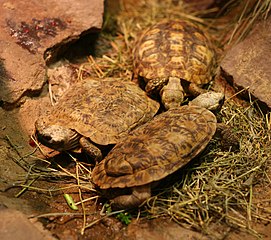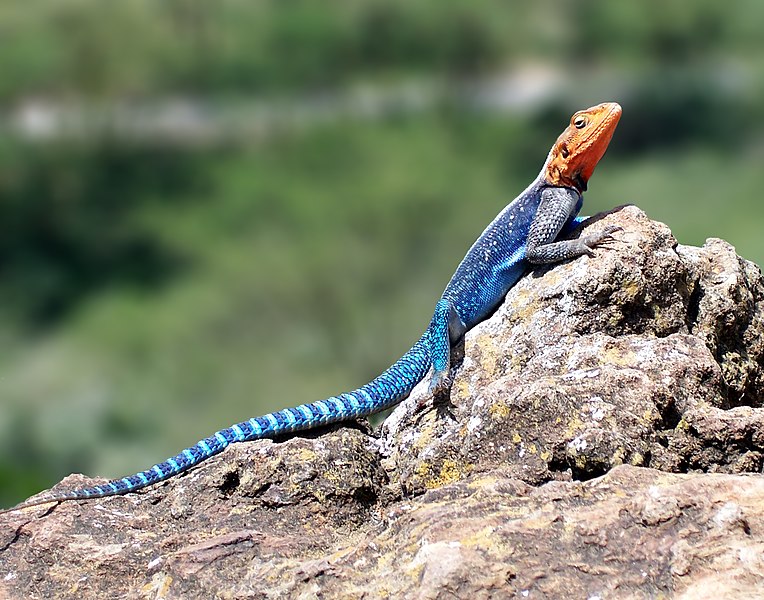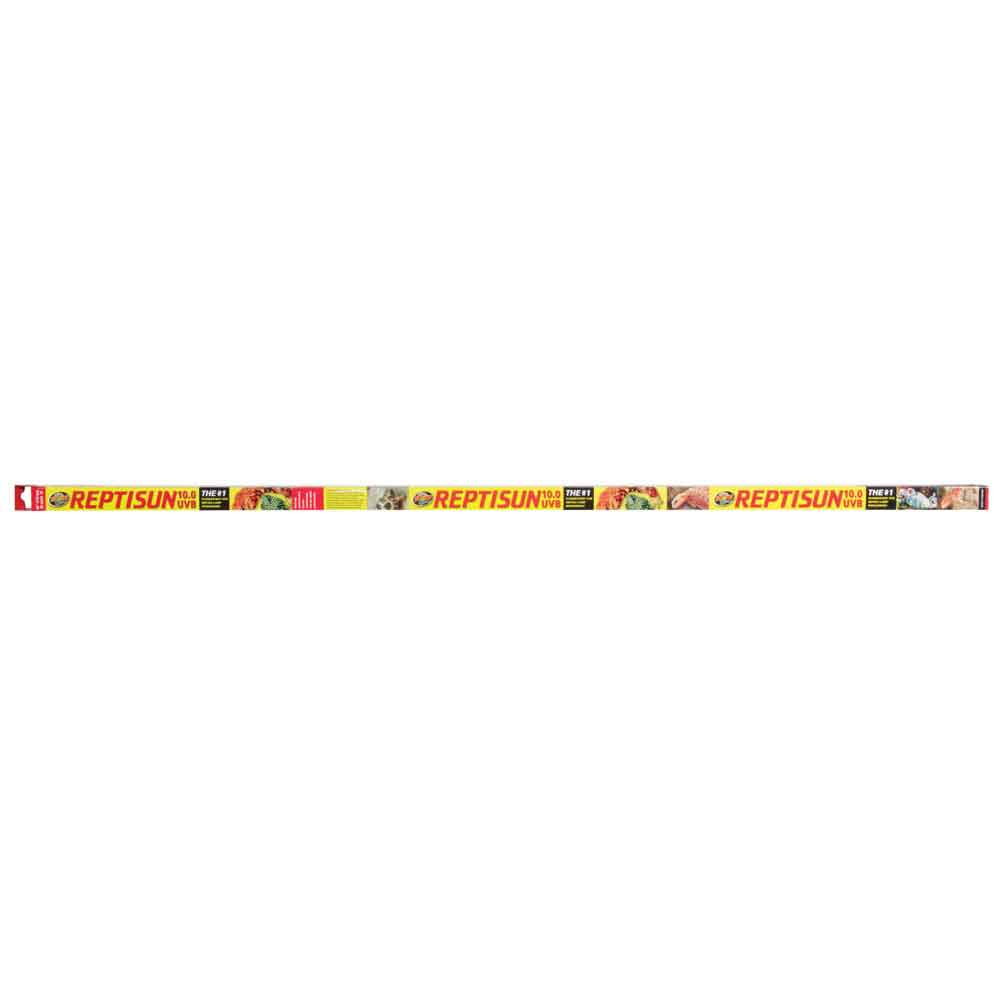 Last time I reported on the Staten Islands Zoo’s use of the Zoo Med 10.0 High Output UVB Lamp (Please see Part I of this article). Today I’d like to provide some specifics concerning tests carried out there.
Last time I reported on the Staten Islands Zoo’s use of the Zoo Med 10.0 High Output UVB Lamp (Please see Part I of this article). Today I’d like to provide some specifics concerning tests carried out there.
Test Results
The UVB output readings recorded at the Staten Island Zoo are as follows (note: measurements are expressed in microwatts per centimeter squared, the standard for measuring UVB output):
Zoo Med Reptisun 10.0 High Output UVB Lamp
| Distance |
Without Screen |
Through Screen |
| 6 inches |
75 |
56 |
| 12 inches |
23 |
18 |
| 18 inches |
10 |
8 |
Zoo Med Reptisun 5.0 UVB Lamp
| Distance |
Without Screen |
Through Screen |
| 6 inches |
32 |
24 |
| 12 inches |
9 |
7 |
| 18 inches |
4 |
3 |
As you can see, the basking site’s distance from the lamp has a major impact upon UVB exposure, as does the screen cover’s deflection of light rays. With a bit of creativity, basking spots within 6 inches of the lamp can be arranged in most situations, and this is certainly the way to go for many species. Where safe to do so, dispensing with the screen cover is another option.
Using a Separate Basking Enclosure
If a 6-inch basking site or uncovered top are not feasible in your pet’s terrarium, consider the possibility of utilizing a separate basking enclosure for a few hours each day. When keeping young radiated and star tortoises in high-topped zoo exhibits, where adequate UVB exposure was not possible, I rotated the animals into a low, uncovered container every day or so, and achieved excellent results.
If you go this route, be sure to keep your pet’s individual needs and temperament in mind. For example, a simple, open container that might suit a Greek tortoise would likely cause a good deal stress to a flat-rock lizard. High strung or secretive animals must be made to feel secure in the basking enclosure, or you may do more harm than good.
Reflectors and UVB Output
The group UV Guide UK has found that simply mounting the lamp within a metal reflector nearly doubles the UVB light that is available to basking animals. In addition to focusing all of the lamp’s light into the terrarium, I imagine that the reflector also helps by deflecting back some of the light that has bounced off screen tops or other structures.
An informative article on the role of UVB and basking behavior in Vitamin D synthesis is posted at:
http://www.uvguide.co.uk/vitdpathway.htm
 That Reptile Blog – Reptile, Amphibian and Exotic Pet Care and Information
That Reptile Blog – Reptile, Amphibian and Exotic Pet Care and Information



 Please see
Please see 

